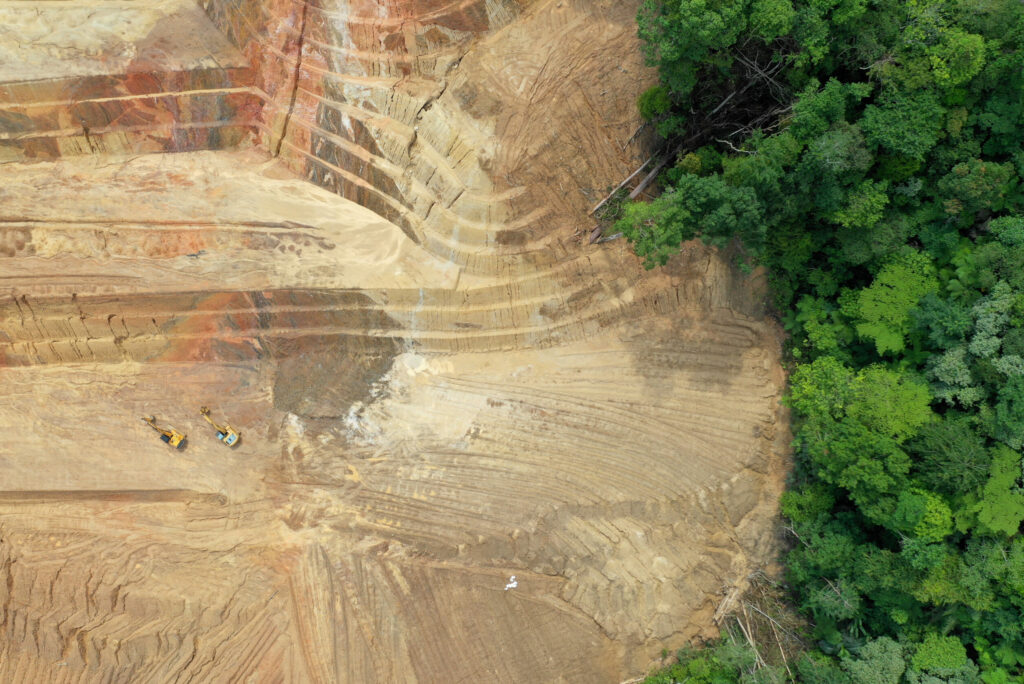Banks can help stop environmental crime

To claim banks are playing a part in saving the world might sound far fetched – yet this is exactly what they can and must do. We’re not talking about executives putting on capes and coming to the rescue, superhero style. Rather, the organisations they run have a responsibility to stop people from benefitting economically from environmental crimes. This includes over-fishing, deforestation and other ventures that threaten ecosystems, decrease biodiversity, and increase carbon dioxide in the atmosphere.
New regulations and standards
Rules have changed. In November 2021, the US Financial Crimes Enforcement Network (FinCEN) urged banks to take action. It said, “Global environmental crimes are estimated by some international organisations to generate hundreds of billions in illicit proceeds annually and now rank as the third-largest illicit activity in the world following the trafficking of drugs and counterfeit goods.”
To stem the flow of cash from such undertakings, FinCEN demanded that financial institutions should report suspicious activity to the regulator to allow investigation and action. This includes details of how illicit products were acquired and paid for, among other things. They also need to provide names and contact details of the suspected criminals.
This isn’t just a US initiative. The EU issued a notice to stop forest degradation at around the same time, and the Financial Action Task Force (FATF) issued a report in July 2021 that said its members must, “Strengthen their operational capacity to detect and pursue financial investigations into environmental crimes.” As the global money laundering and terrorist financing watchdog, FATF is the leading organisation in this field. In short, banks are being asked to literally help save the world in the wake of the COP26 summit in Glasgow.
Rising to the challenge
But how can banks begin to deal with these demands? How are they expected to monitor, spot and report on payments linked to illicit trades of which they have little understanding?
The first step is to take preventative measures and ensure it’s a priority across the sector. This requires a greater focus on beneficial ownership information. To put it another way, banks need to be clear about how they will monitor who is benefitting from payments that pass through shell companies, trusts, or other legal constructions that can hide the proceeds of crime.
Banks are playing a part in saving the world
Secondly, there should also be greater dialogue and collaboration between the public and private sectors to ensure information is shared about risks. Public bodies should also consider money laundering from environmental crime in their work.
For example, it should be part of FATF’s regular Mutual Evaluations. These are reviews of each member country that assess how well FATF recommendations are being implemented to prevent financial crime. Finally, these bodies and authorities need sufficient powers and capacity to investigate and trace assets from suspected environmental crimes.
Once these industry-wide steps have been taken, there are also practical actions financial institutions can take with their anti-money laundering, trade-based money laundering, and watchlist screening solutions. These solutions collect real-time and historical data about transactions. Then they centralise, correlate, and visualise it into a single, user-friendly interface that allows suspect patterns to be seen and concerns raised.The key is being able to spot the transactions that may come from environmental crime, which are often linked to other crimes, such as corruption, terrorism, tax evasion, smuggling, illegal wildlife trafficking and modern slavery.
To achieve this, users need to have scenarios and sophisticated algorithms to spot potential crimes. For example, the technology could be trained to look for payments from firms in regions where deforestation is taking place, something that is accompanied by great spending in plant machinery manufacturers. Or it could be monitoring for payments to trawler firms that occur out of regulated fishing seasons or in areas where landing catches is forbidden, such as near coral reefs. At the same time, users also need to create lists of goods that come from trusted sources to avoid stopping legitimate payments.
This is where further action is required. In fact, a recent report from the organisation, Finance for Biodiversity, suggests there is an urgent need, “To establish the breadth and depth of linkages between financing and environmental crime.” It also says, “There may be merit in establishing an online, digital map highlighting the specifics of this relationship.”
Whatever initiatives are enacted, banks need to move fast. They need to carry out risk assessments and monitor environmental crime indicators closely. They also need to use the right tools, while drawing on as much data as is available to fuel their AML, TBML and watchlist screening tools and report suspicious activity as soon as it arises.
At Eastnets, we understand the complexity of achieving this and we’re supporting organisations to understand financial flows and the associated environmental risk. We’re doing so by providing the means to collect and connect all relevant information and the tools to understand the relationships data reveals. This can help banks spot suspicious activities that might conceal environmental crimes.
The banking sector has a remit and responsibility to save the world. And the environmental clock is ticking.

Deya Innab is Deputy Chief Officer at Eastnets. Before joining Eastnets, her career encompassed working for several entrepreneurial tech firms as well as the multinational professional services network, KPMG, serving global clients.



